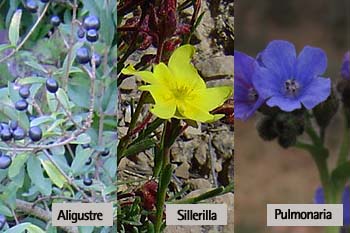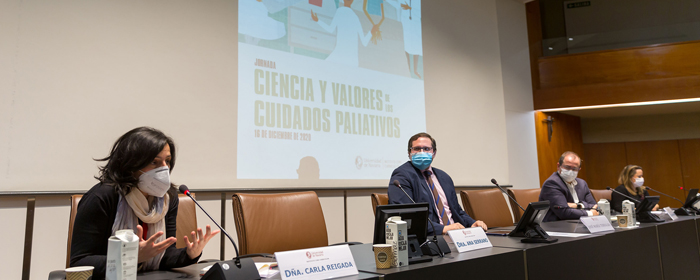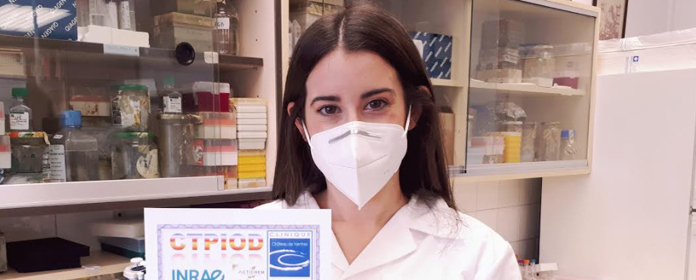A book gathers 3,770 popular uses of medicinal plants of Navarra
The only ethnobotanical study of the Comunidad Foral, published by Equisalud, is presented at the University of Navarra.
The University of Navarra has hosted the presentation of the book Sabiduría popular y plantas curativas, published by Ediciones i and sponsored by the Navarra phytotherapy laboratory Equisalud. The work gathers more than 3,770 popular uses of more than 600 medicinal plants of Navarra (although only 204 are described), documented from 667 interviews carried out in 265 villages.
The research, carried out by Silvia Akerreta from Pamplona and University of Navarra professors María Isabel Calvo and Rita Yolanda Cavero, is the only ethnobotanical study of the region carried out to date.
Today more than 80% of the world's population regularly uses traditional medicine to meet their primary health needs, according to the World Health Organization."Navarra is one of the European hotbeds of natural resources, and where this immense biodiversity is intertwined with a cultural environment rich in traditions and popular wisdom," says Silvia Akerreta.
Throughout the 348 pages of the book, Akerreta, Calvo and Cavero break down, in the form of cards illustrated with photographs, the botanical data of each plant, its pharmacological action described in the scientific bibliography , and traditional medicinal uses collected throughout Navarra, along with contraindications and precautions, and also popular curiosities that have emerged during this vast field work . The work also records the therapeutic use of previously undocumented species, in some cases, or little documented in other cases.
Thus, we discover that in the popular heritage of rural Navarre there are plants for all subject digestive, circulatory, respiratory or dermatological problems. "We find that in Etxarri Aranatz they relieve severe pain by rubbing the area with two oleander leaves and then burning them, or that in Mendigorría they use garlic macerated in ethyl alcohol to prevent heart attacks or thrombosis, although in Lumbier they fry it with dried snake shirt to tackle herpes, and we learn that childhood insomnia can be treated with an infusion of dried poppy petals."
Non-medicinal and magical uses
Popular wisdom and healing plants also discover other uses of plants, beyond the medicinal ones. For example, gorse flowers are used to dye fabrics yellow; in Buñuel they use the decoction of fresh burdock leaves to darken the hair, while in Cáseda and Peralta they use female broom to give blond tones, and in Pueyo they use the infusion of watercress to give shine to the hair. Likewise, magical uses of plants have been documented: chestnut seeds in the pocket bring good luck and butcher's broom and eguzkilore are placed on the doors of houses and farmhouses to protect them.
The researchers explain that it took them five years to do the entire work fieldwork, a task they are still doing today, and that they spent another year and a half compiling it in writing. average "We did hundreds of interviews with people aged 72 years old, which is unusual, because in most ethnobotanical programs of study the informants are not that old. They are people who transmit to you an immense love for plants and for their land, for their roots," explains Akerreta.
They also leave a record in their work of the increasing loss of popular Basque words: "The elder received the name of intsusa and that is documented by Letona in 1979; today, however, this name is barely registered in some areas of northern Navarre. And this is not the only case in which the official name has prevailed over the popular name", they lament.
Akerreta, Calvo and Cavero also note in the pages of this book other cultural losses, such as previously documented medicinal uses of plants that have fallen into oblivion. "That is why ethnobotany and the study of the relationships between human groups and their plant environment is important; not only to increase the scientific knowledge , but also because if we do not avoid it, it is a subject of knowledge on the verge of extinction. This subject of work can help us learn to be aware of the wisdom of nature and our ancestors, with all that this entails," they say.
For Antonio Vega, president of laboratory Equisalud, which specializes in phytotherapy products, it is essential to preserve this cultural heritage. "The ancestral knowledge of medicinal plants, which today is still preserved in the villages although increasingly forgotten constitute the starting pillars for the future research of the active principles of plants and their actions," he points out."Folk wisdom and healing plants is, therefore, a valuable tool of enquiry not only for pharmacists, doctors and naturopaths; also for anyone interested in natural health, and of course for any Navarrese willing to know and take care of this folk wisdom transmitted from generation to generation".
The research has been made possible thanks to funding from the Plan de research of the University of Navarra (PIUNA), together with a scholarship granted by the Government of Navarra.






